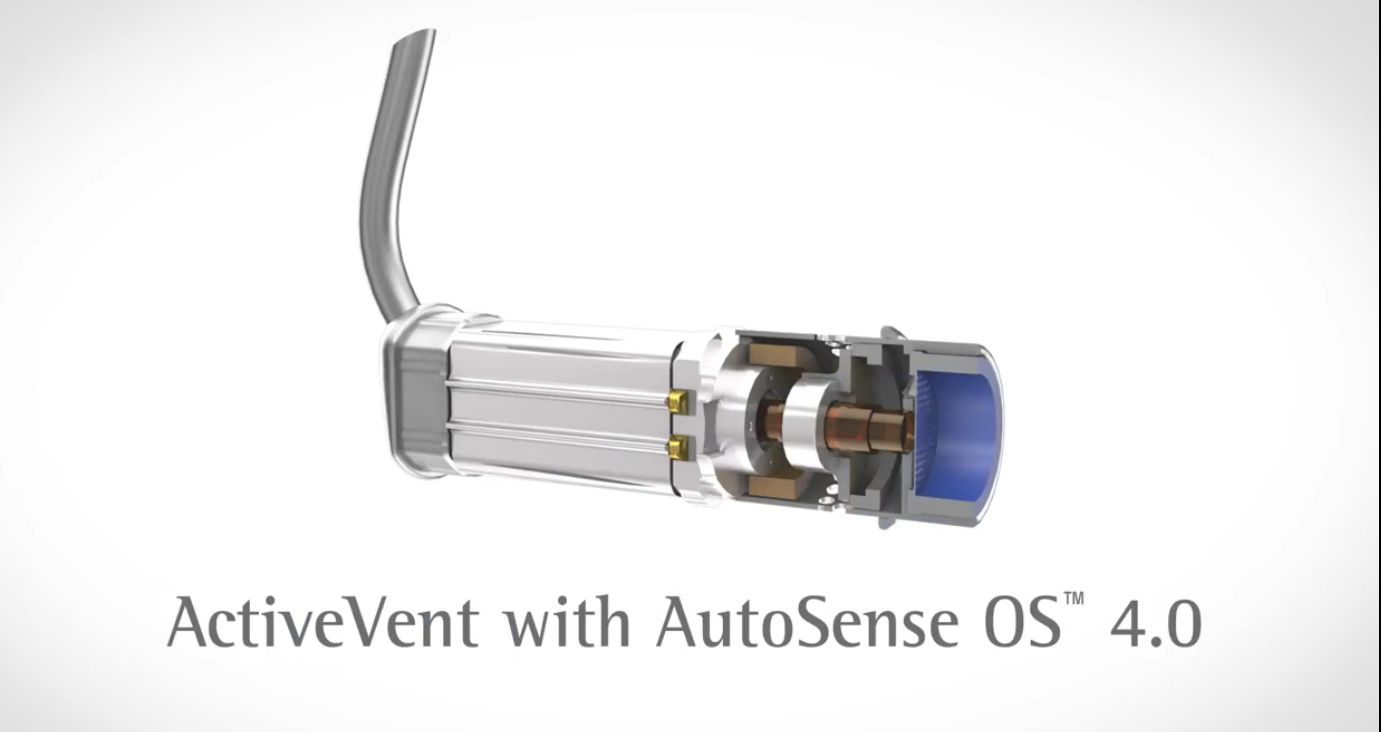
Providing the best hearing aids and hearing care in Scotland
The Hearing Aid Centre Ltd
Audiology House, Oakwood Park, Livingston, UK, EH54 8AW

In August this year, Phonak introduced their new ActiveVent receivers. It represents a great move forward in sound quality for streaming audio for people with high-frequency loss. A colleague of mine recently got a hold of a pair of ActiveVent receivers and he wore them for a couple of weeks. While he has been impressed by the receivers, his experience has not been all plain sailing. He says that it has been amazing for streaming audio sound quality, but there have also been drawbacks. He said that on balance, he could accept the "annoying" for the "amazing" it delivers. Let's talk about the receivers, who would benefit and what those pros and cons are.
What is the ActiveVent
The ActiveVent is a new receiver-type that attaches to Phonak Audeo Paradise hearing aids. You can see the workings of the receiver in the cross-section picture above. The receiver has a mechanical vent system that will change from open to closed based on certain parameters. That is the heart of the system and the key to both the pros and cons I will discuss. The ActiveVent receiver is fitted with a custom tip made from titanium to give the perfect acoustic seal. The vent system remains open generally, except for when audio is being streamed to the aids by Bluetooth or when the user is in a noisy situation. Let's look at who is suitable.
Who is suitable for ActiveVent
Only certain hearing losses are suitable for the new receiver system. The most suitable hearing loss is someone with good low-frequency hearing with the loss in the high frequencies. These types of losses are the ideal candidate for ActiveVent. On top of that, the person needs to have generally clean and dry ears. If they have an earwax problem, or if they have wet ears, they just aren't a suitable candidate for the devices. Last but not least, if you fit those parameters, you also need to be aware that you need to take care of the receivers diligently. If you don't, they will fail.
Open and Closed Vents
What is the difference between open-fit or open vent and closed-fit or closed vent? The rule of thumb, especially for high-frequency losses is that open-fit delivers comfort with a more natural sound, while closed-fit delivers the best efficacy but is unnatural and causes occlusion. This is something that we have to consider when a user has good low-frequency hearing.
The closed fit is best to activate all of the features in the hearing aids, it also delivers the very best streaming audio experience. Up to now, when we deal with a high-frequency hearing loss, it is a compromise between comfort and efficacy. ActiveVent tries to provide the best of both worlds, an open fit that converts to a closed fit in some situations.
The Experience!
My colleague who has a typical noise-induced high-frequency hearing loss has spoken in-depth about his experiences and he said that the streaming audio provided with the ActiveVent receivers is superb. The sound was at least comparable with a decent set of headphones he uses to listen to music. He also said that the streaming audio for phone calls was excellent, he could hear the caller much better even in noisier situations with the ActiveVent system. The calls were excellent; with the difference between his usual open fits and the ActiveVent being noticeable.
Noisy Situations
The ActiveVent is also activated in quite noisy situations and he said that his sense was that speech is easier to hear, and he had to put slightly less focus on hearing it. It means that you will get a better opportunity to hear speech in those noisier situations. Of course, the sound you hear will not be as natural as you may be used to.
An Audible Clunk
When the ActiveVent system closes, there is an audible clunk, it is quite audible and noticeable. It is unfortunately an unavoidable function of the system in action and nothing can be done about it. Initially, it could be a bit disconcerting, but in general, most people report that they simply got used to it. While that is what we want the system to do when we stream audio via Bluetooth, it is also something of a concern, let me explain. The issue here is that every time the Bluetooth on your phone grabs the connection to your hearing aids, the vent will close.
That is fantastic when you are streaming audio or phone calls, but not when it is just a phone notification or even worse when you are idly scrolling through Facebook on your phone and coming across a video. My colleague reported that the system clicked on and off constantly when he was looking through Facebook or Linkedin on his phone, which became irritating.
He worked out that the problem was with videos, even though he had the videos on his news feed muted, they were set to autoplay. That meant that every time he scrolled by a video, the Bluetooth connection grabbed the aids and activated the system. Hence clickety-click, click, click.
Solving The Issue
Solving the issue was simple, he went into the settings on both apps, found the video settings and turned off the autoplay. That solved the incessant clicking issue while using the apps. The other thing he did was to make sure that many of his audio notifications were turned off, to minimise the number of times the ActiveVent system was activated.
To Summarise
The ActiveVent system offers people with good low frequency an excellent balance of open-fit for normal use and closed fit when they need it. Beware though, when they activate, there is a clear, audible clunk, which can be irritating if you don't take some action on phone notifications and video autoplay on your phone. So it would be best to turn autoplay for videos off on your apps and manage your app audio notifications.
While there is a massive HF3 wax guard on the tip of the receiver, it will need to be changed when it begins to get accumulate wax and you will need to take care of the receivers. This is important, the ActiveVents are an added extra and you will pay extra for them. It should also be noted that Phonak only offers a six-month warranty on them.
It is important to note that does not mean you will only get six months out of them. But, if they fail after six months, you are paying for new ones. If you have wet or quite waxy ears, these receivers aren't for you. I think that these receivers represent a step forward in hearing aid technology. However, they are the first of their type, I think certain things will need to be ironed out. My colleague's experience certainly shows benefits and points the way forward to getting the best out of the system.
Like all new technology, they will only get better with time. If you would like to experience the ActiveVent receivers, or you are interested in the best hearing aids available in Livingston, Edinburgh and central Scotland call me on 01506 420519 to arrange an appointment.
Looking For a Hearing Test or The Very Latest Hearing Aids in Scotland
Call 01506 420519 to arrange your appointment or click below to provide your details
